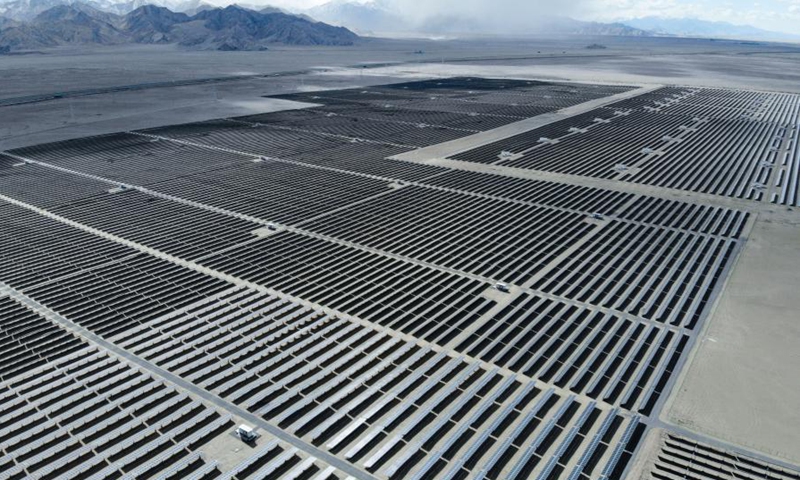
Aerial photo taken on Oct. 31, 2019 shows solar modules at a photovoltaic power industrial park in Golmud City, northwest China's Qinghai Province. Qinghai is rich in solar and wind power. So far, the total installed renewable energy power generating capacity in Hainan Tibetan Autonomous Prefecture and Haixi Mongolian and Tibetan Autonomous Prefecture has reached 15 million kilowatts and 10 million kilowatts respectively. (Xinhua/Wu Gang)
India ranked as the third-largest buyer of China’s solar modules in the first five months this year, showing that India’s efforts to decouple its solar industry from China are failing, industry observers said.
According to statistics released by the China Photovoltaic Industry Association on Thursday, India accounted for 9.1 percent of China’s solar module export value, equal to $7.46 billion, rising from 4.9 percent during the same period in 2020.
“India’s solar market is developing fast,” Liu Yiyang, deputy secretary general of the China Photovoltaic Industry Association, told the Global Times on Thursday, adding that the coronavirus hit India’s imports of Chinese solar products last year.
However, as Indian Prime Minister Narendra Modi hopes to push forward his goal to develop clean and green energy, the country is ramping up efforts to create a solar revolution and shake off its dependence on solar products from China.
New Delhi plans to raise customs duties on solar products. From April 2022, it will levy customs duties at a rate of 40 percent on solar modules and 25 percent on solar cells.
“The main aim is to attract more solar companies to invest in India and protect Indian solar products,” Liu explained, warning that once the customs duty rise comes into effect, it will affect China’s solar product exports to India.
An article by The Diplomat in March said that as of 2020, India produced 36GW of solar energy out of 90GW of renewables, and nearly 85 percent of its solar equipment was imported from China.
The top five exporters to India in terms of module volume during 2020 were Chinese enterprises including LONGi Green Energy Technology and JinkoSolar.
This makes India’s decoupling attempts in the solar sector hard to realize, industry observers noted.
Two decades ago, China and India were both at the bottom in the global solar industry. However, by lowering costs and developing technologies, China now leads the global industry in terms of solar module capacity.
In the first five months, the export value of Chinese solar modules soared by 34.4 percent, the solar association said.




